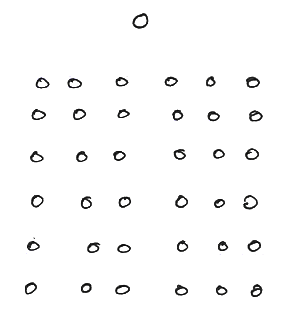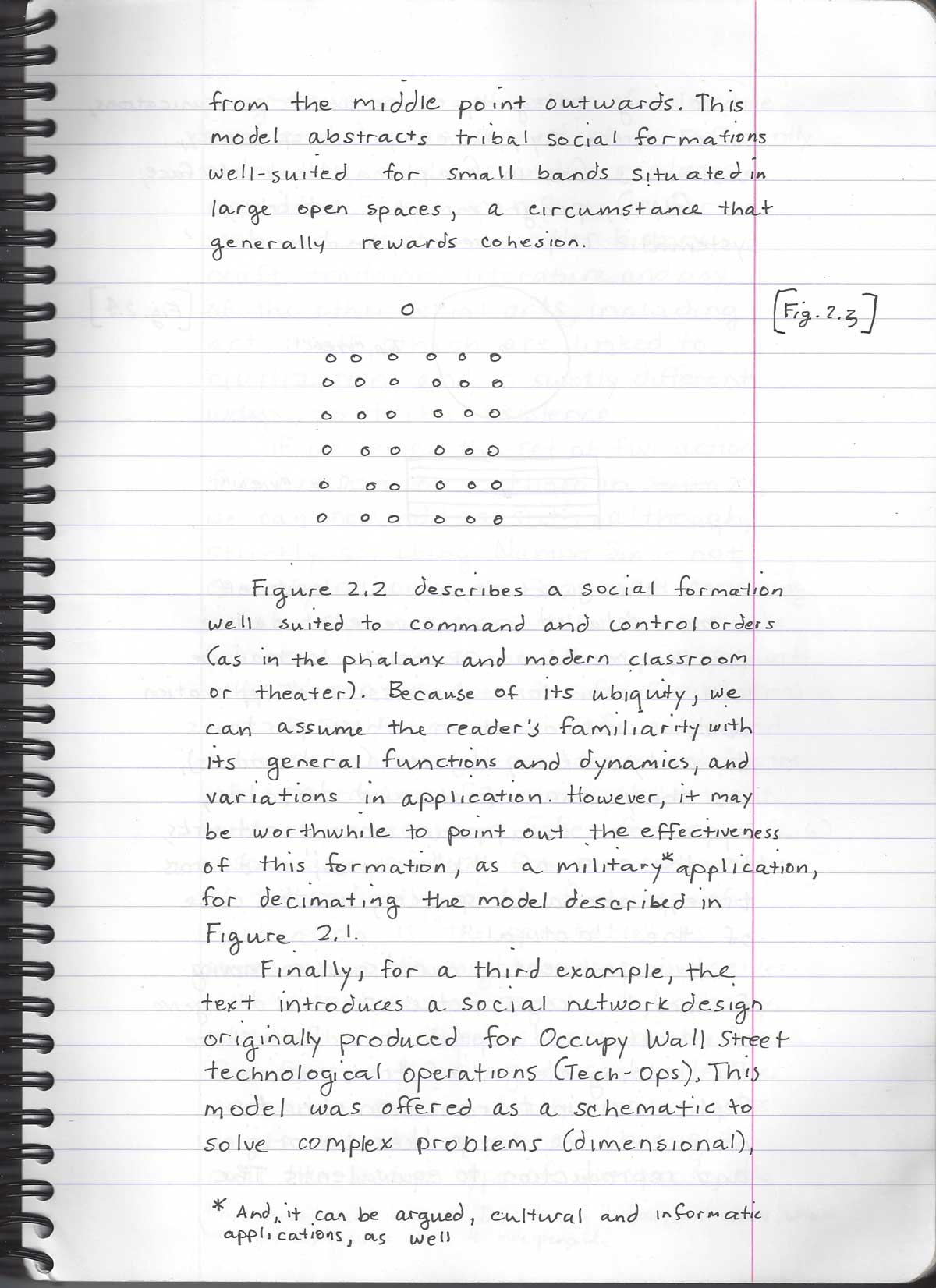from the middle point outwards. This model abstracts tribal social formations well-suited for small bands situated in large open spaces, a circumstance that generally rewards cohesion.

Figure 2.3 describes a social formation well suited to command and control orders (as in the phalanx and modern classroom or theater). Because of its ubiquity, we can assume the reader's familiarity with its general functions and dynamics, and variations in application. However, it may be worthwhile to point out the effectiveness of this formation, as a military* application, for decimating the model described in Figure 2.1.
Finally, for a third example, the text introduces a social network design originally produced for Occupy Wall Street technological operations (Tech-Ops). This model was offered as a schematic to solve complex problems (dimensional),
